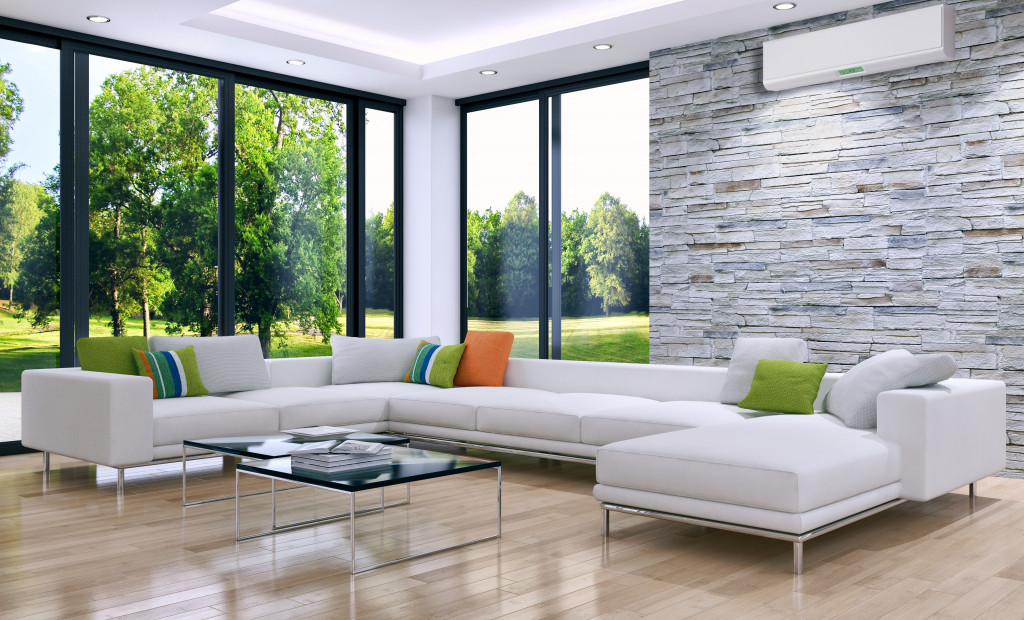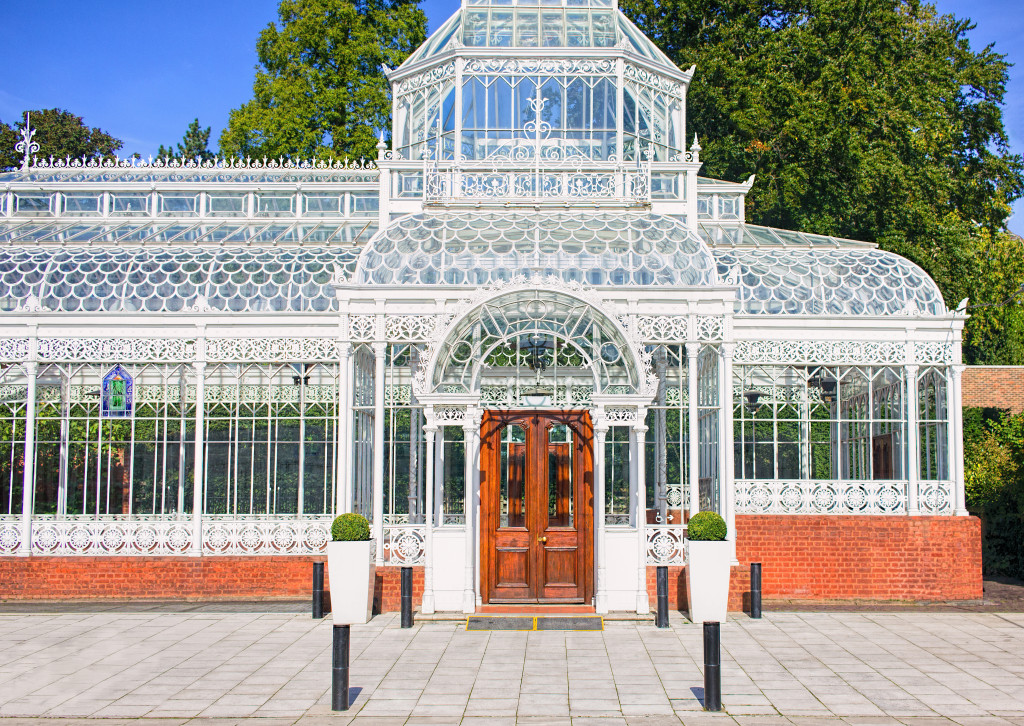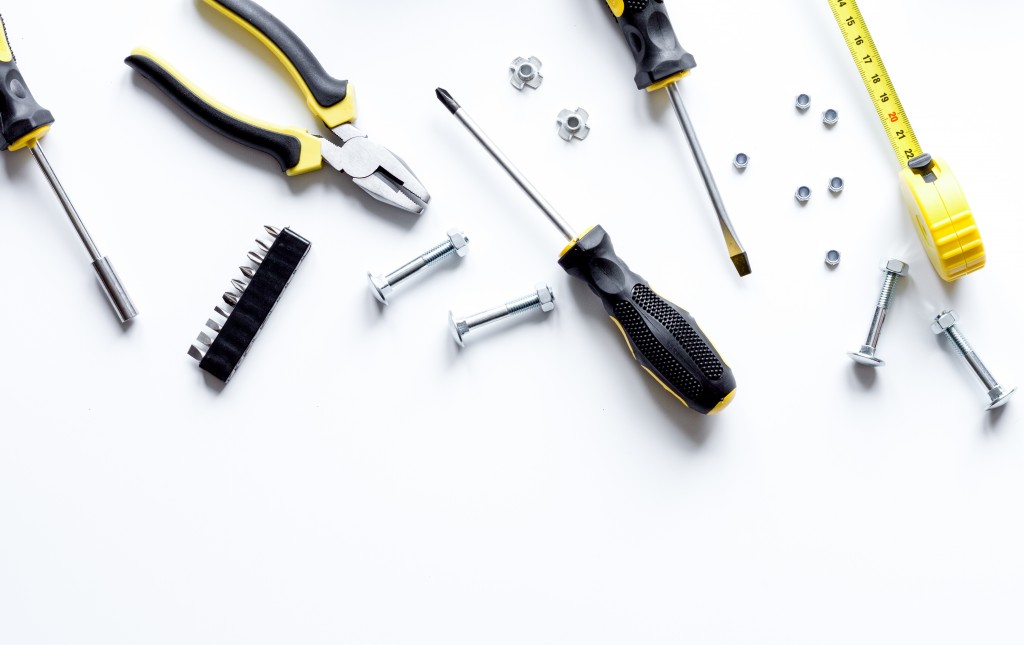Installing glass panels instead of drywall around your home will maximize the natural light in your space. As a result, you can save energy on lighting. Your home will be bright and airy, and every area and corner will probably be a picture-perfect spot. If you like indoor plants, your home will also be a sanctuary for them.
However, considering the price of glass panels, is building a glasshouse a cost-efficient idea?
The answer depends on different factors. Consider the following before making a decision:
1. Costs
Tempered glass is the typical glass used in home construction. Each panel costs between $25 and $75 per square foot. If you also install glass doors, expect to pay $1,000 to $3,000 apiece.
Labor is another expense altogether. Installers may charge $35 to $150 per hour, depending on your location.
Window walls, which stretch from floor to ceiling, may cost between $700 and $1,600 per linear foot. Low-end types can cost as low as $240 per linear foot. The reason for the wide gap between prices is customization. Every panel is made to fit a particular space.
Window walls can be made of tempered glass or other types. They usually come with horizontal and vertical metal framing, but frameless types are also available. Frameless window walls suit luxurious homes, offering an uninterrupted view of the outdoors.
2. Safety
One of the main concerns of homeowners about glass panels is safety. Glass panels may break during a strong hurricane or earthquake. But getting a sturdy type of glass with reinforced framing can make glass panels stay intact under pressure.
Tempered glass is about four times stronger than regular annealed glass. If the tempered glass shatters, it breaks down into small, crystal-like pieces without sharp edges, allowing you to stay unhurt if you happen to be near the glass when it breaks. On the other hand, ordinary annealed glass breaks into sharp, jagged pieces that can pierce your skin and cause injuries.
Of course, nobody wants their tempered glass walls to break even if they stay safe. A solution to that is installing security films all over the glass. The film’s adhesive will hold the shards in place if the glass breaks, allowing the entire panel to stay upright.
3. Aesthetics

Enhanced aesthetic quality is the main benefit of a glasshouse. With natural light bathing your space, you’ll feel more relaxed and closer to nature. Your abode can also exhibit an organic, Zen quality.
If you love the aesthetics of a glasshouse but can’t afford glass panels for your whole home, consider starting with a beautiful glass garden. You can make it a conservatory, sunroom, or wellness room. A glass garden can generate huge energy savings even if it’s only a small space. Make the ceilings high so that the hot air can dissipate and cool the space down during warm days.
4. Type of Glass
If you’re not sold by tempered glass, you can choose among other glass types. Consider shatterproof glass, which is commonly used for windows, skylights, and floors. Like tempered glass, it doesn’t break down into sharp, jagged pieces but into long, spiderweb-like cracks that won’t rain down the floor. Shatterproof glass is more known as laminated glass in the market.
You should also consider the glass’s finish. You’ll most likely opt for clear glass, thanks to all the natural light it will offer. But for certain rooms, like bathrooms and bedrooms, clear glass may create privacy concerns. Though you can use shutters or drapes to cover the glass, there may be instances when you’d prefer to keep the windows exposed. In that case, you may consider frosted glass. Its blurred finish can keep you unseen no matter the time of the day.
Combo glass, the combination of clear and frosted finishes, is also a good way to implement privacy. It’s more common in offices, but a house will look cozy with it, too.
Linen glass is also worth considering. It gives a linen-like texture to the glass, adding dimension and personality. It may fit bathrooms and other small spaces.
5. Maintenance
Lastly, consider if you’re up to maintaining glass panels. They require frequent cleaning, especially if it often rains in your area. Hard water will leave white marks on the glass, making the surface blurry and disrupting the flow of natural light.
You can use robotic window cleaners to make the task easier. But you still need to inspect for streaks and remove them manually.
Overall, building a glasshouse appears to be worth the money and effort. The only time to hesitate is when you live in a hurricane- or earthquake-prone area or if your budget doesn’t permit it. Even if you can reinforce glass, your safety isn’t worth risking if your area’s climate is unpredictable.



